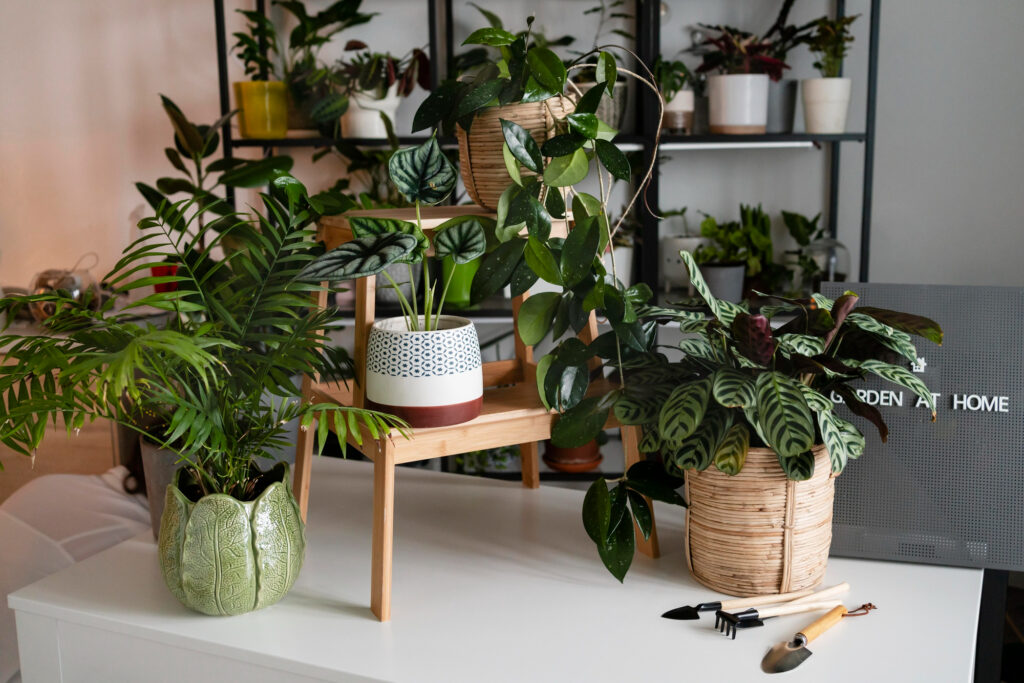As urban heat rises and air conditioning guzzles energy, more homeowners are turning to nature’s silent helpers: plants. Growing the right plants at home indoors and outdoors is one of the smartest and most sustainable ways to reduce the temperature at home. With the right mix of foliage and placement, plants can dramatically lower indoor heat while visually and energetically refreshing the space.
Why a Cooler Home Starts with Greenery
Plants at home are not just decorative accents; they’re natural climate controllers. With their ability to cool the surrounding air through processes such as transpiration and shading, plants transform any living area into a tranquil, breathable retreat. By integrating greenery into your home, you not only reduce the temperature at home but also boost air quality and emotional well-being.
Understanding the Science Behind Plant Cooling
How Plants Naturally Reduce Indoor Temperature
Plants absorb sunlight and water, releasing moisture into the air through tiny pores on their leaves, a process called transpiration. This natural phenomenon helps reduce indoor humidity and brings down surrounding temperatures by up to 10 degrees in some cases. The moisture acts like a natural misting system, refreshing the air without electricity.
The Role of Transpiration and Shade in Climate Control
Besides transpiration, plants also create shade. Large leaves block direct sunlight from heating walls, windows, and floors. Strategic shading using potted trees or tall shrubs near sun-facing areas can lower surface temperatures, allowing you to reduce the temperature at home without relying heavily on artificial cooling.
Choosing the Right Plants for Home Cooling
Top Indoor Plants That Keep Your Space Chill
- Areca Palm: A moisture-releasing powerhouse that doubles as an air purifier.
- Rubber Plant: Great for removing toxins and thrives in low light.
- Peace Lily: Known for its calming effect and strong transpiration capacity.
- Fiddle Leaf Fig: Its large leaves block sunlight effectively, acting as natural curtains.
Low-Maintenance Green Options for Busy Lifestyles
For those with little time to spare, opt for:
- Snake Plant: Hardy, stylish, and thrives on neglect.
- Aloe Vera: Requires minimal watering and offers medicinal benefits.
- ZZ Plant: Tolerates low light and infrequent watering.
Best Outdoor Plants to Cool Balconies and Terraces
- Money Plant (Pothos): Fast-growing and excellent for railing planters.
- Bougainvillea: A vibrant creeper that provides colourful shade.
- Bamboo: Quick-growing and great for creating privacy screens that also reduce heat.
Where to Place Your Plants for Maximum Cooling
Sun-Facing Windows, Balconies and Other Hotspots
Place leafy plants near east or west-facing windows where sunlight is strongest. This not only reduces direct heat but also helps maintain indoor temperatures at a more comfortable level throughout the day.
Creating a Cooling Zone with Vertical Gardens
Vertical gardens are space-saving and highly efficient. Install a green wall on any heated exterior like a balcony or courtyard wall. They act as living insulation, naturally reducing temperature at home and creating a lush visual focal point.
Smart Gardening Tips to Boost Cooling Effect
Using the Right Pots and Soil for Temperature Control
Terracotta and clay pots are breathable and prevent roots from overheating. Use well-aerated soil mixes with compost and cocopeat, which retain moisture longer and aid transpiration.
Watering Techniques that Keep Plants and Rooms Cool
Mist your plants during peak heat hours to enhance humidity and leaf cooling. Use drip trays or self-watering systems to ensure consistent hydration, especially in dry environments.
Combining Plants with Reflective Surfaces for Better Results
Place plants near white walls or reflective tiles to bounce light around without absorbing heat. This trick not only cools the space but also amplifies natural light.
Creating a Mini Indoor Jungle for a Cooler Microclimate
Layering Tall, Medium and Small Plants for Impact
Stack your greenery for a jungle effect. Tall floor plants, mid-height tablescape greens, and trailing shelf plants work together to create dense shade pockets and cooler zones inside your home.
How to Use Hanging Plants and Vines to Your Advantage
Hang pothos, philodendron, or ivy from curtain rods, shelves, or ceiling hooks. These plants act as living drapes, diffusing light and cooling the air as it circulates around them.
DIY Projects to Make Your Home Cooler with Plants
Build a Plant Wall that Combats Heat Naturally
Create a modular plant wall using recycled wooden pallets or wall-mounted pots. Choose plants with lush foliage and strong growth, like ferns and spider plants, to create an effective green buffer.
Design a Balcony Garden That Doubles as a Shade Provider
Use tall plants like lemongrass, hibiscus, or palms in large pots to block heat and create an inviting lounge spot. Install hanging baskets above seating areas to layer in vertical shade.
Sustainable Practices That Enhance Plant Cooling
Composting and Organic Soil for Better Moisture Retention
Rich, organic compost improves soil structure and moisture retention. Moist soil boosts plant transpiration, helping reduce temperature at home over longer periods.
Eco-Friendly Planters That Keep Temperatures Down
Avoid plastic pots, which trap heat. Instead, use jute-lined baskets, bamboo planters, or upcycled ceramic pots that regulate temperature better and support plant health.
Common Mistakes to Avoid When Growing Plants at Home for Cooling
Overcrowding Plants or Placing Them in Poor Light
Too many plants in one corner can restrict airflow and lead to humidity build-up rather than cooling. Always provide adequate spacing and light conditions for each species to thrive.
Ignoring Plant Health and Its Impact on Effectiveness
Unhealthy plants won’t transpire efficiently. Regular pruning, proper fertilising, and pest management are key to keeping your green companions effective in lowering your home’s heat.
Final Thoughts
In a world grappling with climate extremes, embracing nature is no longer optional; it’s essential. Incorporating smart greenery strategies can help reduce temperature at home, slash your power bills, and turn your living space into a serene oasis. Whether it’s a hanging pothos in your kitchen or a lush vertical wall on your balcony, each plant is a silent ally in your battle against the heat. Start small, think green, and let nature cool your world.


